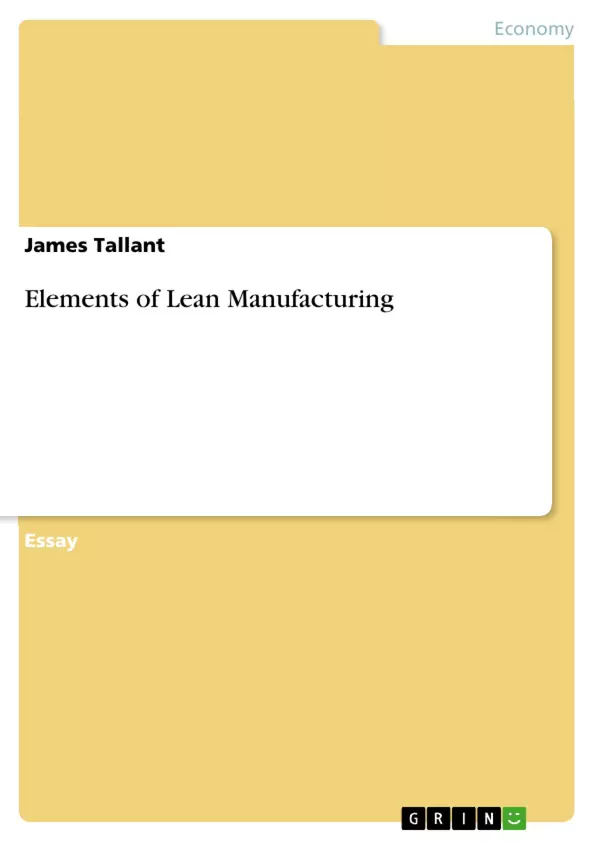In the current business environment, organizations attempt to find ways to improve productivity, sales, and financial health. Many of these organizations are turning to lean enterprise or lean manufacturing to help them. Lean systems link organizations’’ core competencies with its suppliers through internal and external interactions through various processes focusing on eliminating “waste through designing and improving work of activities, connections, and flows” (Flinchbaugh, n. d., p. 2, para. 2). This paper will discuss elements of lean manufacturing used by Harley Davidson Motor Cycle Company. This paper addresses several topics: various lean core concepts, which elements are required to move toward a lean environment, organizational vision, and how lean manufacturing supports an organization such s Harley Davidson’s vision.
Table of Contents
- Introduction
- Briefly describe at least three core elements of lean
- Small Lot Sizes
- Flexible Workforce
- Preventative Maintenance
- Identify which elements are required for your selected organization to move toward a lean environment
- Quality at the Source
- Standardized Components and Work Methods
- Close Supplier Ties
- Describe your selected organization's vision
- Describe how your selected organization's vision supports lean. If the organization's vision does not support lean, re-write it so that it does and describe how your new version of the vision supports lean
Objectives and Key Themes
This paper examines the elements of lean manufacturing used by Harley Davidson Motor Cycle Company. The primary focus is on understanding how lean concepts, such as small lot sizes, flexible workforce, and preventative maintenance, contribute to a lean environment. The paper also explores how key elements like quality at the source, standardized components, and close supplier ties support Harley Davidson's vision and overall lean manufacturing strategy.
- Core Elements of Lean Manufacturing
- Implementation of Lean at Harley Davidson
- Harley Davidson's Vision and its Alignment with Lean Principles
- Benefits of Lean Manufacturing for Harley Davidson
- The Importance of Continuous Improvement in a Lean Environment
Chapter Summaries
The paper begins by introducing lean manufacturing and its relevance in today's business environment. It then delves into three core elements of lean: small lot sizes, flexible workforce, and preventative maintenance. These elements are explained in detail, highlighting their benefits and limitations. The paper subsequently analyzes specific elements required for Harley Davidson's transition to a lean environment, focusing on quality at the source, standardized components, and close supplier ties.
Further, the paper examines Harley Davidson's vision and its alignment with lean principles. The discussion emphasizes the company's commitment to building high-quality motorcycles that meet the individual needs of its customers. The paper also explores how lean techniques contribute to achieving this vision by lowering costs, improving quality, and enhancing customer experiences.
Finally, the paper highlights the importance of continuous improvement in a lean environment, emphasizing Harley Davidson's successful implementation of lean principles through initiatives like The Materials as Needed (MAN) operation.
Keywords
This paper explores the key concepts of lean manufacturing, its implementation at Harley Davidson Motor Cycle Company, and the alignment between lean principles and the organization's vision. It focuses on core elements like small lot sizes, flexible workforce, and preventative maintenance, as well as important aspects such as quality at the source, standardized components, and close supplier ties. The paper also highlights the significance of continuous improvement in a lean environment.
- Quote paper
- James Tallant (Author), 2010, Elements of Lean Manufacturing , Munich, GRIN Verlag, https://www.grin.com/document/167295



